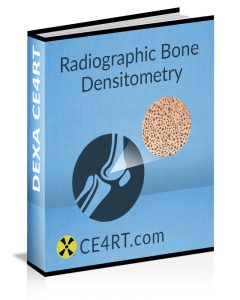Best Vitamin D for Bone Health: Dietary Sources or Supplements?

For most individuals, the recommended intake of vitamin D is 200 IU per day. However, people in the 50- to 70-year age group are recommended to increase their vitamin D intake to 400 IU per day. People above the age of 70 should take 600 IU of vitamin D every day. What is the best vitamin D for bone health? Dietary sources or supplements?
Sources of Vitamin D
The human body obtains vitamin D from two sources – dietary intake and exposure of the skin to sunlight. In addition, vitamin D can be obtained from supplements. Which of these is the best vitamin D for bone health? For people who live in warm sunny climates, particularly children who play outdoors, exposure of the skin to sunlight during the summer months is enough to produce adequate stores of vitamin D to last the entire year. For many people, however, getting enough exposure to sunlight to achieve sufficient levels of vitamin D is not practical. In these people, dietary intake is critical in maintaining adequate levels of this vital nutrient.
As mentioned above, older individuals have a higher requirement of vitamin D. Since elderly people are likely to face difficulty spending time outdoors, it is especially important for them to boost their vitamin D levels with dietary intake. In addition, people with dark skin and people living in heavily polluted areas require longer periods of exposure to sunlight to make adequate amounts of vitamin D. People living in northern latitudes with limited hours of sunshine also depend on diet to obtain vitamin D. In these populations, dietary sources are the best vitamin D for bone health and play an important role in maintaining adequate levels of this vital nutrient.
Vitamin D from Dietary Sources
The best vitamin D for bone health from dietary sources is fortified milk. There are other dietary sources of vitamin D as well. As mentioned, for people under the age of 50, the daily recommended intake of vitamin D is 200 IU, and half of this (100 IU) can be obtained from one cup of fortified milk. It should be noted that other dairy products such as yogurt, cheese, and ice cream are not typically good sources of vitamin D since they are not made with fortified milk. Besides milk, fatty fish and fortified orange juice are good dietary sources of vitamin D. The nutrition label on the food packaging usually includes information about the vitamin D content.
Vitamin D from Supplements
Supplements containing vitamin D alone are not commonly available. Supplements containing a combination of calcium and vitamin D, however, are easily available over the counter. Are these supplements the best vitamin D for bone health?
Typically, calcium and multivitamin supplements contain 200-400 IU of vitamin D. Thus, a single dose of supplement is not sufficient to meet the recommended dose in people over the age of 70 who need 600 IU of vitamin D every day.

The amount of vitamin D contained in a supplement is listed on the label. Therefore, the dose should be adjusted to ensure that the recommended amount of the nutrient is consumed. In addition to supplements, vitamin D levels should be boosted through other natural sources.
It is important to remember, however, that excessive vitamin D is harmful. The maximum upper level that can be tolerated by the body is estimated to be 2,000 IU a day. Very high doses of vitamin D should be avoided. Larger doses are necessary, however, to replenish stores in people with vitamin D deficiency.
Other Nutrients Important for Bone Health
The two primary nutrients that are vital for bone health are calcium and vitamin D. In addition to the best vitamin D for bone health, there are other nutrients that are also essential for healthy bones. These include magnesium and phosphorus. The diet of most Americans contains a sufficient amount of phosphorus which is found in milk, cereals, meats, and processed foods. Sodas (soft drinks or carbonated beverages) also contain phosphorus; however, they are not a recommended source of this nutrient because they are often consumed instead of healthier alternatives, such as milk, which is rich in calcium.
Magnesium is found in green leafy vegetables, dairy products, nuts, and whole grains. Therefore, people who consume a diet that is lacking in these foods may have a suboptimal intake of magnesium. Other micronutrients that are necessary in addition to the best vitamin D for bone health include copper, zinc, manganese, iron, and vitamins C and K. They are usually found in sufficient amounts in the diet of most Americans.
Foods to Avoid for Better Bone Health
Every individual should aim to consume the best vitamin D for bone health. In addition, some components of the diet should be avoided as they can potentially negatively impact bone health, particularly in combination with an inadequate calcium level. For instance, a high intake of caffeine or a sodium-rich diet is known to increase the excretion of calcium in the urine. Studies have found that the negative effects of caffeine and sodium can be counteracted by increasing dietary calcium intake. Excessive intake of phosphorus is also associated with alterations in calcium metabolism. However, for the majority of Americans, the typical amount of phosphorus consumed in food is not enough to negatively impact skeletal health.
Retinol, which is pre-formed type of vitamin A, is also known to negatively affect bone. Therefore, this vitamin should not be consumed in amounts exceeding the recommended daily allowance. It should be noted that beta carotene, a precursor form of vitamin A which is found in vegetables and fruits, does not have a similar negative effect on bone.
DXA Continuing Education
Radiologic technologists and DXA operators can complete their CEU requirements by purchasing our e-courses and tests. These can be conveniently completed online. Our bone densitometry e-course is worth 23 CE credits and is recognized by ARRT® and other registries. A certificate of completion will be issued immediately upon passing the post-test. Browse our shop to purchase the type and number of credits you need.
Here is more information about radiography ceu.
